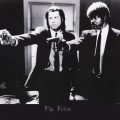The world’s first transplant of a “dead heart” has taken place in Australia, where doctors say that the surgical technique could significantly increase the number of potential donor organs.
The heart had stopped beating, and instead of being chilled after removal from the donor, it was revived and kept warm by a specialised procedure to keep it beating outside the body until the transplant operation.
Normally, hearts are kept beating inside the body of a brain-dead donor using life-support, but this puts a time limit on how long they can be kept as the organs can soon deteriorate, especially when they stop beating after they are removed.
Researchers at St Vincent’s Hospital in Sydney and the Victor Chang Cardiac Research Institute managed to revive hearts that had stopped beating for up to 20 minutes, in what they termed a "paradigm shift" in transplant procedures which could increase the pool of donor organs.
Donated hearts were kept beating in a machine for about four hours before transplantation and were monitored to assess whether they were suitable for the operation, said Professor Peter MacDonald, the leader of the surgical team.
“This is something that we have been researching really over the last four years, to sustain this period where the heart has stopped beating. Having done that we have developed a technique for then reactivating the heart,” Professor MacDonald said.
“We warm it up and the heart starts to beat. When it’s beating we can measure the metabolism of the heart and, based on the performance of the heart on the machine, we can tell quite reliably whether this heart will work,” he added.
When heart transplants first took place in the 1960s, it was routine to use “dead” hearts from patients after circulatory death, but this was only possible because donor and recipient were in adjacent operating theatres, said Kumud Dhital, from St Vincent’s Hospital
“This collocation of donor and recipient is extremely rare in the current era, leading us to rely solely on brain-dead donors – until now,” Dr Dhital said.
The new procedure involves a so-called “heart-in-a-box” machine where the organ is kept warm and beating outside the body, bathed in a special preservative solution rich in oxygen and nutrients.
“The incredible development of the preservation solution, with this technology of being able to preserve the heart, resuscitate it and to assess the function of the heart, has made this possible,” Dr Dhital said.
Between 2013 and 2014, there were 206 heart and heart-and-lung transplants in the UK but this new development could lead to more donor organs being available, said Professor Peter Weissberg, medical director of the British Heart Foundation.
“At the moment, hearts are chilled and are not beating when they are taken from the donor. This can cause them to deteriorate. The new technique could increase the number of potential donor hearts,” Professor Weissberg said.
Professor MacDonald explained that the work goes back 20 years. Three heart transplants have so far taken place using the technique and two of the three patients have recovered well – the third is intensive care because the transplant took place within the past week.
“We’ve been researching to see how long the heart can sustain this period in which it has stopped beating. We then developed a technique for reactivating the heart in a so-called heart-in-a-box machine,” Professor MacDonald said.
“To do that we removed blood from the donor to prime the machine and then we take the heart out, connect it to the machine, warm it up and then it starts to beat,” he said.
A 57-year-old Sydney woman Michelle Gribilas, and Sydney man Jan Damen, 40, were among the first patients to benefit from the procedure.
“I was very sick before I had it. Now I’m a different person altogether. I feel like I’m 40 years old. I’m very lucky,” said Ms Gribilas, who was suffering from congenital heart failure and had the surgery two months ago.
Source
Surgeons perform first successful 'dead heart' transplants
6 posts
• Page 1 of 1
Surgeons perform first successful 'dead heart' transplants
The Matrix Has You






-

yoda you can call me - Under The Influence

- Posts: 4048
- Joined: Oct 14th, '13, 10:47
- Location: Dagobah
- Gender: Male
-

DetroitSkills - Band Leader

- Posts: 7255
- Joined: Sep 7th, '13, 21:04
- Location: Detroit, What!?
- Gender: Male
Re: Surgeons perform first successful 'dead heart' transplan
That's crazy. This is probably going to escalate to revolutionary surgical procedures quite possibly in the next decade.
s/o to Eedee Python CP Horse Snake Pain SaJn Silver Cement Excitaz PK Rolly GW EG Charlotte Kasia Mel Wiz Solace TRex SliK Aone Atone Trimss Menzo Geno Fish Jaba Detroit Blogs Based lil_b IBR DA! Mono ROM NRG Bigray Hesky Francesco Yoda Noddy Raul
Just Silver wrote:I think every guy should massage their prostate at least once
-

mdemaz - Addict

- Posts: 10208
- Joined: Dec 6th, '10, 12:09
- Location: Brisbane, Australia
- Gender: Male
Re: Surgeons perform first successful 'dead heart' transplan
Its always good to see medical advances
"This world is mine for the taking, make me king as we move toward a new world order"
-Eminem
RIP TR 2005-2014
We live on at http://www.hiphopshelter.com
-Eminem
RIP TR 2005-2014
We live on at http://www.hiphopshelter.com
-

runSA - Soldier

- Posts: 501
- Joined: Aug 30th, '14, 22:46
- Location: Long Island
- Gender: Male
Re: Surgeons perform first successful 'dead heart' transplan
DetroitSkills wrote:wow
-

shadyblogger - Under The Influence

- Posts: 4145
- Joined: Nov 19th, '13, 02:50
- Gender: Male
6 posts
• Page 1 of 1
Who is online
Users browsing this forum: No registered users



